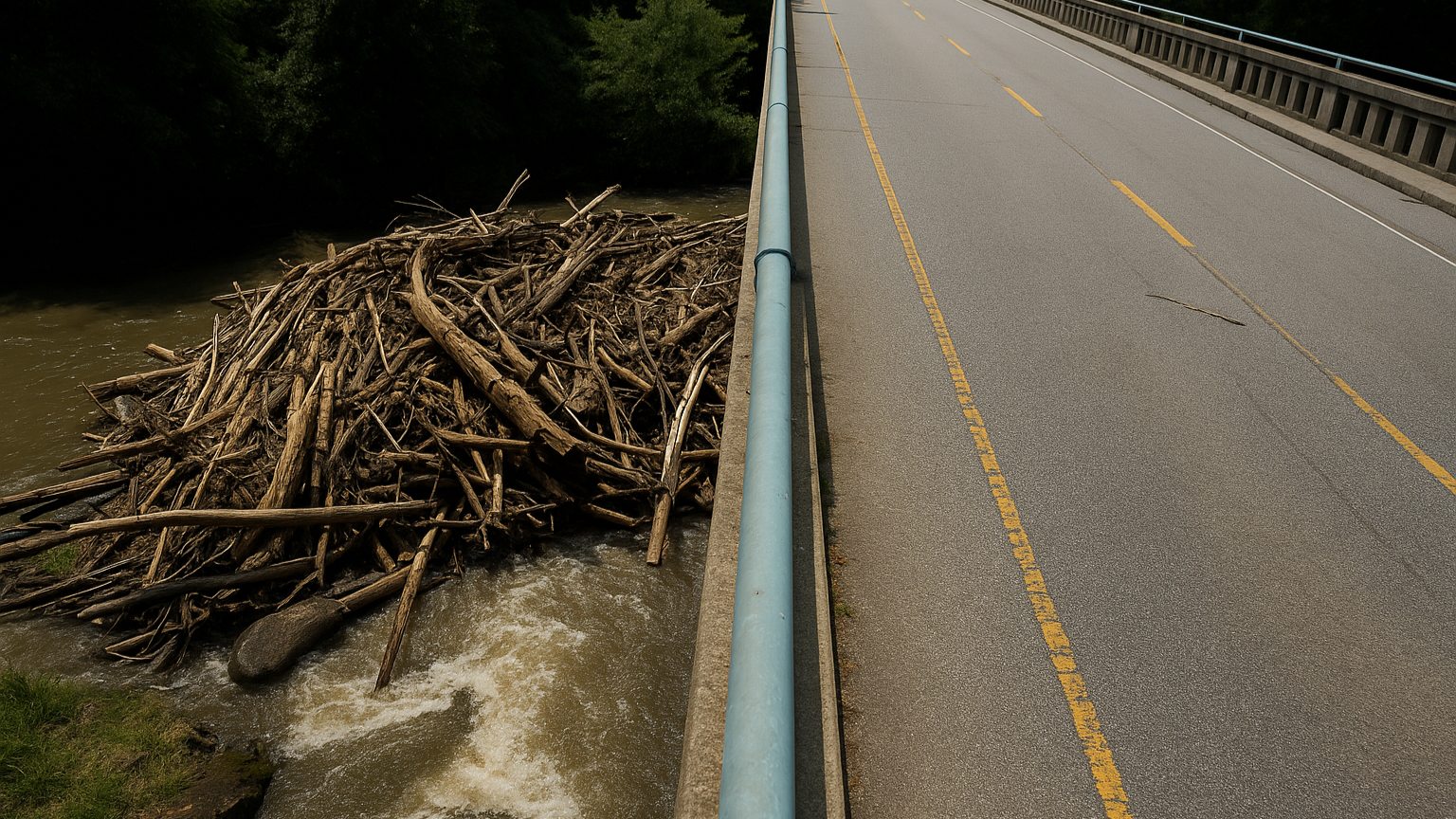
Clearing Large Bridge Logjams: An Innovative, Multi-Phase Approach
At MTM Enterprises, we understand that complex waterway challenges require equally complex solutions. Clearing large bridge logjams is one of those challenges – a task that demands precise planning, innovative technology, and a deep understanding of both the environment and the infrastructure we protect.
Phase 1: Pre-Operation Assessment
The first step in any successful logjam clearance is understanding the full extent of the blockage. Using advanced aerial and underwater technologies, we map, assess, and plan every move before a single log is touched.
Airborne Drone Surveys – Drones like the DJI Mavic 3 Enterprise provide a detailed aerial view of the jam, using 4K imaging and 56× zoom to identify both surface and submerged hazards.
Underwater ROV Scanning – Submarine drones like the Chasing M2 Pro dive deeper, scanning for debris density, sediment buildup, and structural risks to bridge piers. These ROVs capture 4K video with depth-synced metadata, giving our teams a clear picture of what lies below the surface.
Phase 2: Barge-Based Debris Removal
With the assessment complete, our crews deploy modular barge systems, positioning amphibious excavators and debris boxes to efficiently clear the jam. This approach minimizes bank disturbance and reduces environmental impact.
Precision Excavation – High-reach excavators on barges carefully dismantle interlocked debris, reducing the risk of unintended bank erosion.
Clean and Open Method – Hand tools like chainsaws and ropes create initial flow channels through the jam, while embedded logs and stumps are left intact to preserve streambed stability. Strategic log relocation can also stabilize banks or even create fish habitats, promoting long-term ecological health.
Phase 3: Submarine Drone Support
Once the bulk of the debris is removed, ROVs play a critical role in verifying that the clearance was effective.
Pier Clearance Verification – ROVs confirm that bridge piers are free of debris, reducing the risk of structural damage.
Sonar Mapping for Targeted Extraction – Sonar-equipped drones map remaining underwater debris pockets, guiding targeted extraction efforts and ensuring no hazards are overlooked.
Phase 4: Adaptive Safety & Monitoring
Safety and environmental stewardship are at the core of every project we take on. During and after debris removal, our teams remain vigilant to protect sensitive habitats.
Eco-Friendly Anchoring – Barges are anchored using systems designed to minimize disturbance to riverbeds and aquatic life.
Regulatory Compliance – Drones continuously document the site, capturing data to demonstrate compliance with environmental regulations and track restoration progress.
Real-World Impact
This integrated, technology-driven approach delivers exceptional results:
50% Faster Clearance – Compared to traditional methods, our approach dramatically reduces project timelines.
30% Cost Savings – Fewer diver deployments and more precise debris targeting lead to significant cost reductions.
Zero Sediment Violations – Phased debris extraction and real-time ROV monitoring keep sediment disturbances within regulatory limits, protecting water quality and aquatic habitats.
At MTM Enterprises, we believe that innovation isn’t just about doing the job faster – it’s about doing it better, safer, and with a lighter environmental footprint. That’s the MTM difference.